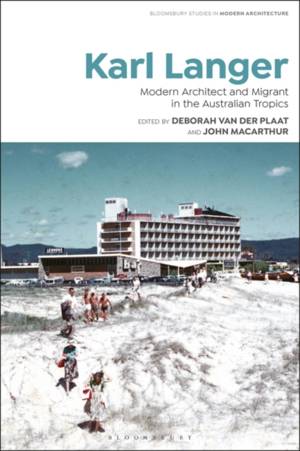
Vous voulez être sûr que vos cadeaux seront sous le sapin de Noël à temps? Nos magasins vous accueillent à bras ouverts. La plupart de nos magasins sont ouverts également les dimanches, vous pouvez vérifier les heures d'ouvertures sur notre site.
- Retrait gratuit dans votre magasin Club
- 7.000.000 titres dans notre catalogue
- Payer en toute sécurité
- Toujours un magasin près de chez vous
Vous voulez être sûr que vos cadeaux seront sous le sapin de Noël à temps? Nos magasins vous accueillent à bras ouverts. La plupart de nos magasins sont ouverts également les dimanches, vous pouvez vérifier les heures d'ouvertures sur notre site.
- Retrait gratuit dans votre magasin Club
- 7.000.0000 titres dans notre catalogue
- Payer en toute sécurité
- Toujours un magasin près de chez vous
Karl Langer
Modern Architect and Migrant in the Australian Tropics
137,95 €
+ 275 points
Description
Despite a European training and an early career working with Peter Behrens, a migration from Vienna to the Australian state of Queensland positioned the architect Karl Langer (1903-1969) at the very edge of both European and Australian modernism. Confronted by tropical heat and glare, the economics of affordable housing, fiercely proud and regional architectural practices, and a suspicion of the foreign, Langer moulded the European language of international modernism to the unique climatic and social conditions of tropical Australia.
This book will tell Langer's story through a series of edited essays focused on key themes and projects. Published as part of the Bloomsbury Studies in Modern Architecture series, which brings to light the work of significant yet overlooked modernist architects, it is both an examination of an architect's work and international legacy, and also a case study in the trans-global dissemination of design ideas. Studying the architect's built and proposed work, both regional and metropolitan, the scale and reach of Langer's practice will be considered for the first time, showing how, given his continued influence on the contemporary culture of tropical design, Langer has been unjustly ignored by the historiography of both Australian and Modernist architecture to date.Spécifications
Parties prenantes
- Editeur:
Contenu
- Nombre de pages :
- 328
- Langue:
- Anglais
- Collection :
Caractéristiques
- EAN:
- 9781350068100
- Date de parution :
- 07-04-22
- Format:
- Livre relié
- Format numérique:
- Genaaid
- Dimensions :
- 152 mm x 236 mm
- Poids :
- 798 g






